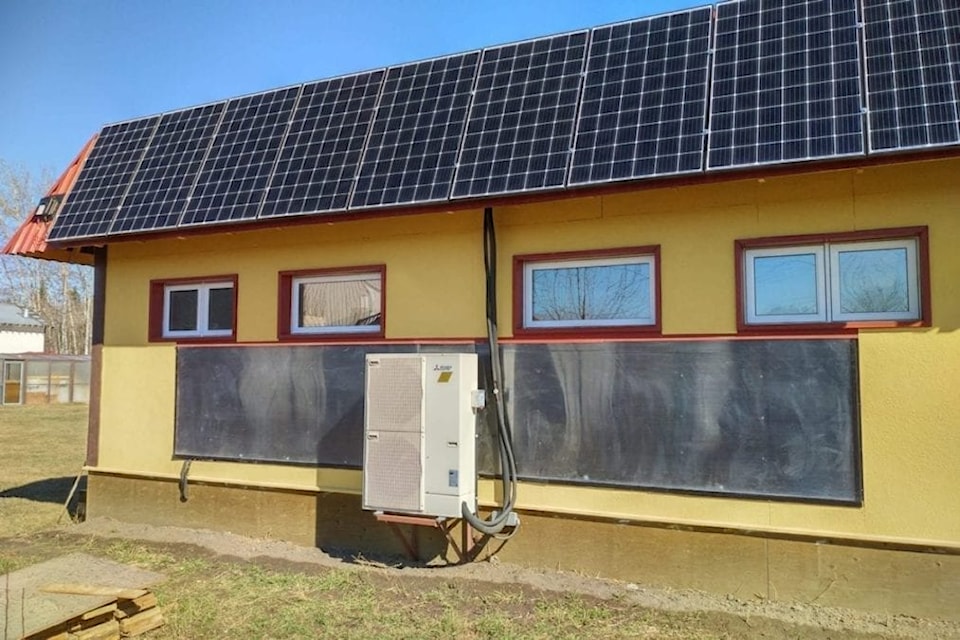A new, almost entirely self-sufficient building in Fort Smith made it through its first winter and celebrated its grand opening earlier this month.
Stand Alone Energy, run by former Western Arctic MP Dennis Bevington and Jack Van Camp, led the design and construction of the Boreal Sun Building with the aim of it providing its own heat, energy and water.


photos courtesy of Dennis Bevington
“I've always had a pretty big interest in how to deal with climate change and reducing the cost of energy for people in the North,” says Bevington, who owns the building.
While the building has a backup wood pellet boiler in place, most of the energy used to heat and power the building comes from the sun. With a few more tweaks in the works, the system will be even more self-reliant this next winter.
The idea has been in the works for a few years. Bevington has a property with two other buildings that are old, not energy-efficient and difficult to rent out because utilities are so expensive.
“So, the plan was to build an office building that has almost no utility costs,” says Bevington.
The building gets its power from solar photovoltaic arrays, which are positioned at a steep angle – 70 degrees – to catch more energy in the fall, winter and spring. Power is stored in a large battery bank.
“It’s very important in the winter, at this latitude, to have a very upright panel,” he says. “You also increase your (energy gained) through reflectivity from the snow.”
The building also has solar thermal collectors, which collect heat from the sun and heat a 16,000-litre tank under the building. This tank collects rainwater, heating it with the thermal collectors as well as energy from the panels, and supplies the building’s non-potable water needs.
For heat, the building has a combination of resistance heating systems, heat pumps and the wood pellet boiler. Bevington is looking at ways to tweak the system to get more from the electrical methods in order to use the wood pellet boiler less.
“We’re doing everything we can to maximize what we can get out of the system and I don’t think we were there completely last year.”
As well, only two out of four of the building’s rental spaces were occupied. In addition, one space has been in use as a temporary office space and another is a multipurpose room.
He says the worst part of last year was in late November and early December, when a cloud bank hovered over Fort Smith and disrupted his system.
Otherwise, the building often produces more energy than it needs.
“We need to place the energy, sometimes, outside the building,” says Bevington. “My wife and I just purchased a hybrid vehicle and will be plugging that into the building.”
Many of the systems in place in the building are systems his company has installed elsewhere over the years and he’s hoping at least some of the systems spread in usage across the region. Bevington says heat pumps, in particular, are a very cost-effective way to produce heat from electricity.
Costs are lowering
Bevington says costs are lowering for alternative energy technology, to the point where they will save residents money over the long-term.
This project is part of a recent wave of similar endeavours, with Northerners across the territory trying to find small-scale solutions to the territory’s high-cost and, in some regions, diesel-reliant utilities.
In Fort Providence, SSi Micro president and CEO Jeff Philipp has pitched the hamlet, through his SSi Energy company, an alternative municipal energy grid that uses heat recovery systems off diesel generation to heat buildings.
In Yellowknife, Ecology North and the Yellowknives Dene First Nation have partnered to try to build the Northern Centre for Sustainability, which would run off low-carbon technology and would capture emissions from the wood pellets it burns, effectively becoming carbon-negative.
